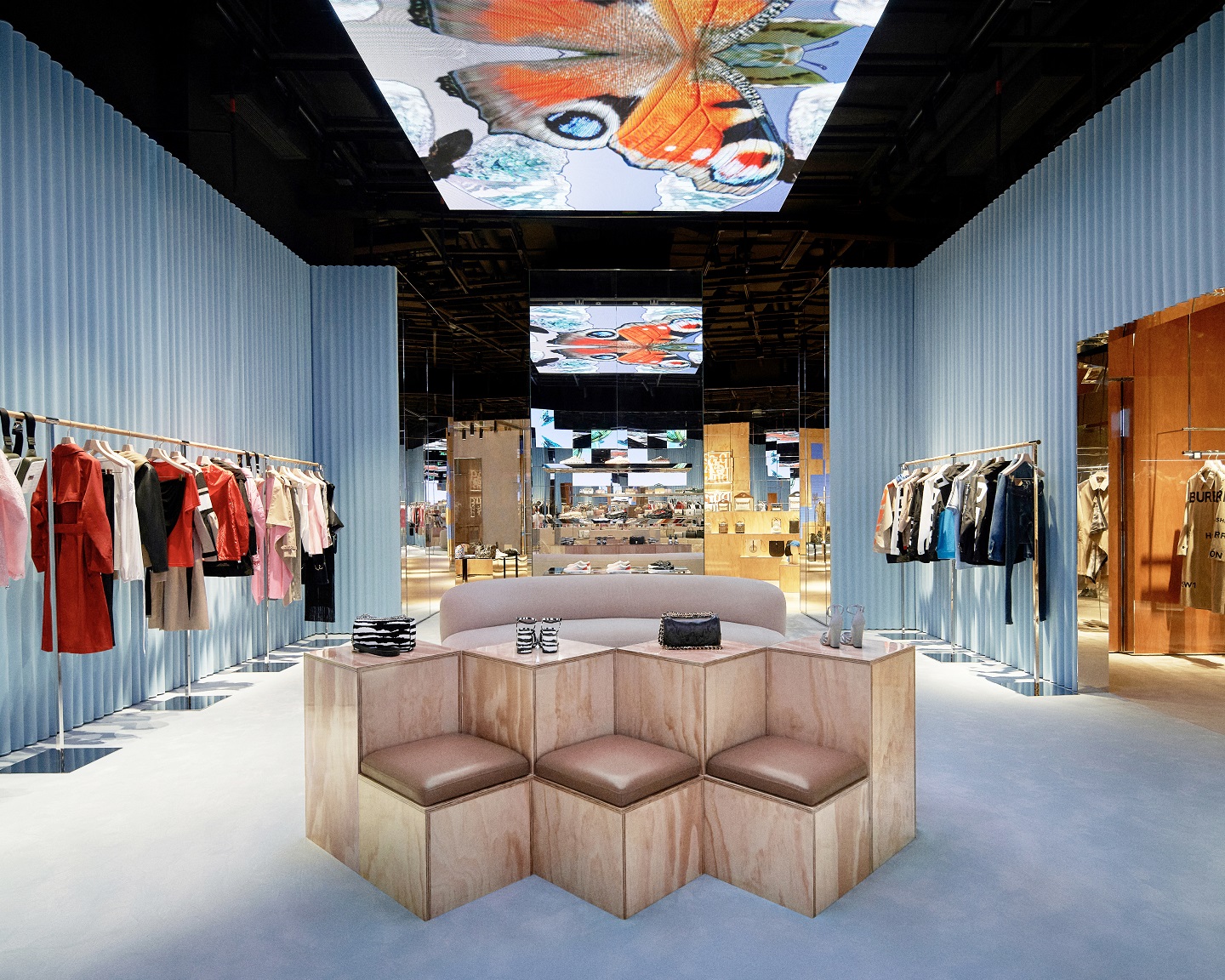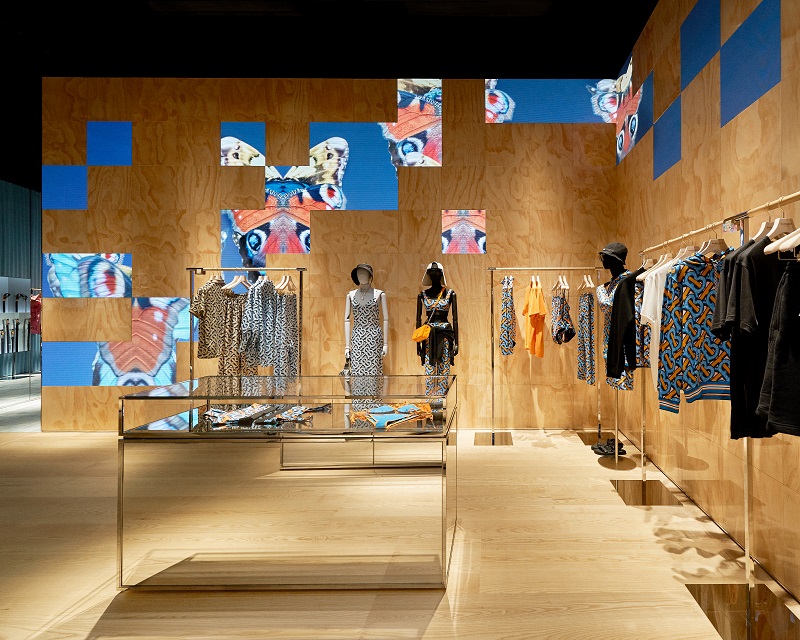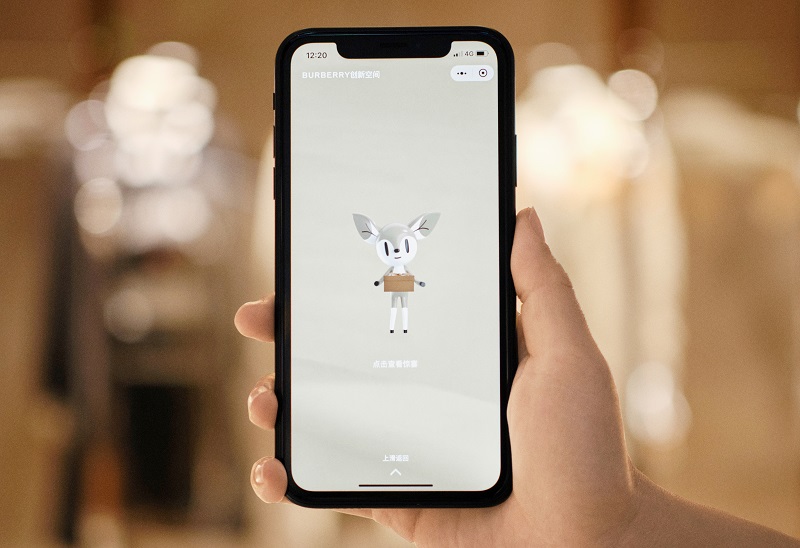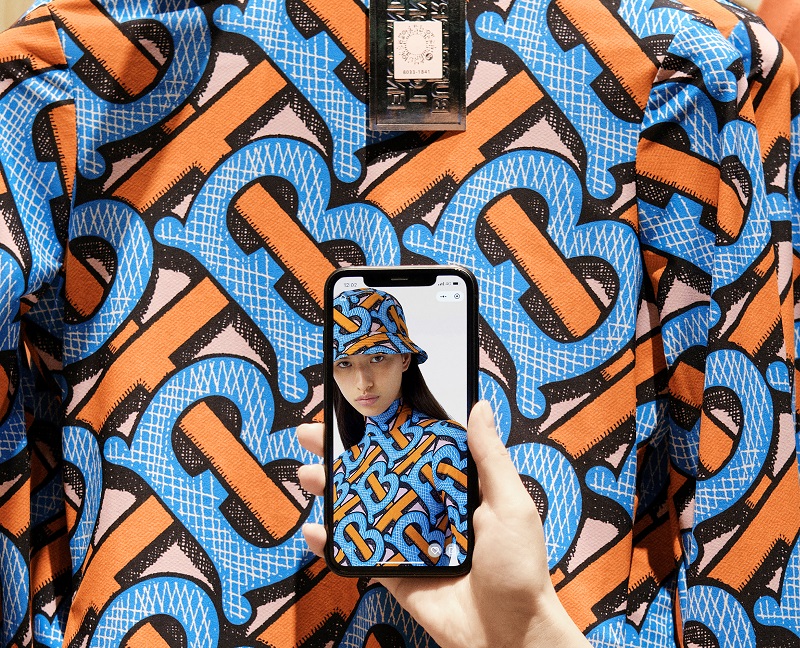
The Shenzhen outlet integrates social media and gaming with the shopping experience (All photos: Burberry)
It may sound like a line from the dystopian film Blade Runner but the relationship between fashion and technology has always revolved around the maker and the machine. Boutiques are no longer just spaces to display wares but destinations of experiences that help tech-savvy customers transition between stores and their mobile phone.
Hence, the interactive shop recently conceived by Burberry and China’s largest social media company Tencent can be qualified as a bespoke shopping experience of the modern times.
The location is Shenzhen, a booming tech hub that befits Burberry agenda for luxury fashion’s first ever “social retail” store. Partnering Tencent was a no-brainer as the Chinese company – which owns messaging app WeChat and the popular video game Fortnite – helps build a shopping experience unlike your average dressing-room, which integrates social media and gaming.
burberry_shenzhen_store_c_courtesy_of_burberry_004.jpg

Using Burberry’s new WeChat mini platform, you can not only book appointments, reserve fitting rooms and a table at the store’s café, but also accrue “social currency”. To put it simply, the system works like a loyalty stamp card – the more you use the app, the more rewards you receive.
To create a profile, users will be given a digital avatar in the form of a cartoon that hatches from an “egg”. From there, they can collect more points when they unlock exclusive content, such as scanning the QR codes on products.
burberry_shenzhen_store_-_wechat_mini_program_c_courtesy_of_burberry_001.jpg

Drawing upon Burberry’s rich heritage, the store also celebrates the house codes as reinterpreted by Riccardo Tisci, including the Trench Coat, the Thomas Burberry Monogram, Nature and the Burberry Animal Kingdom.
The new social retail venture reflects Burberry’s pioneering history of firsts but what will happen to the bricks-and-mortar stores if everything a shopper needs is available with a swipe on a phone screen?
Burberry CEO Marco Gobbetti mentioned that a customer’s journey fundamentally starts digitally with research for information about brands but they (particularly Asian shoppers) still prefer to develop a relationship with store assistants.
burberry_shenzhen_store_-_qr_codes_c_courtesy_of_burberry_003.jpg

The British luxury fashion house is no stranger to digital innovation after all – it was the first brand to live-stream a catwalk show in 2010 before Instagram even took flight. This latest Shenzhen outlet will prove to be a unique space to test and learn as the brand seeks to expand to the rest of its network in China.
For more information, see here.


